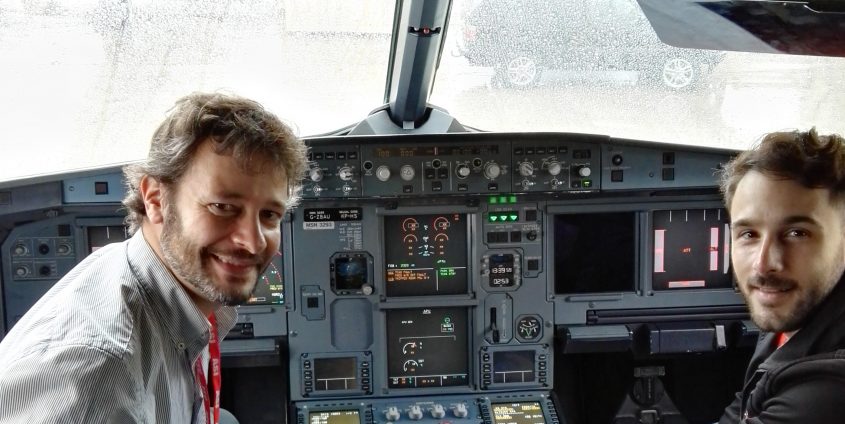Flying high with reduced weight
The aviation industry has a keen interest in reducing the amount of cables in aircraft. A team of researchers is now working on the advancement of wireless communication in avionics.
The A380 passenger aircraft – the largest of its kind to be manufactured in serial production with a maximum capacity of up to 853 passengers – boasts a total of 530 kilometres of installed cables. Weighing in at around 25 tonnes, the sheer weight of these cables is a major factor, accounting for between two and five per cent of the total weight. As the weight of the aircraft has a direct impact on costs associated with the level of fuel consumption or servicing and maintenance, every kilogram of cable saved is worth its weight in gold. Fewer cables also increase the flexibility of the installation technology. The solution lies in wireless connections, which need to be particularly reliable in terms of communication and must be able to withstand interferences. Since 2015, Christian Bettstetter, Jorge Schmidt and Daniel Neuhold (Department of Networked and Embedded Systems, the latter two are pictured above) have been collaborating on a research project with Lakeside Labs and Jirka Klaue (Airbus, Hamburg) as well as Dominic Schupke (Airbus, Munich), supported by the Carinthian Economic Promotion Fund (KWF).
Wireless sensor networks of this kind intended for aircraft need to prove highly reliable in several ways: Hardware, software and communication protocols must be robust against interferences and must function flawlessly. The doctoral student Daniel Neuhold, who is currently on a 6-month research visit at the University of Southern California (USC) as part of his work, uses an everyday scenario to describe the technical challenges: “Imagine that you are sitting at a table and trying to have a conversation with any one person. As long as no-one interrupts, you can manage this without difficulty. However, if other individuals present should also start a conversation, or if someone turns on a radio, you will perceive this as interference, and you will need to adapt your conversation in such a way that your conversational partner can still understand you. Whether you raise your voice above all others, change the pitch of your voice to stand out more, or ask everyone else not to speak at the same time – in the widest sense, all these efforts represent a type of protocol, which you introduce in order to ensure successful communication. The biggest distinction to the work we do is that we are at a table with several thousand conversational partners, all of whom need to exchange information simultaneously.” Consequently, the aim of the project is to establish robust communication protocols for wireless networks in avionics.
The project has already yielded some results, which have been presented, amongst others, in a recent paper with the title “Experimental Study of Packet Loss in a UWB Sensor Network for Aircraft”. In this paper the authors reconstruct the composition of a sensor network in the passenger cabin of a commercial aircraft with several passengers, and evaluate the use of Ultra-Wide-Bad (UWB) as a potential communication technology. Their experiments demonstrate the effects passengers have on the communication technology established in an aircraft cabin, and they also introduce processes that can reduce both the loss rate of data packets and the associated required redundancy. This study offers early insights for the qualitative description of the reliability of wireless data transfer within an aircraft. The paper received the Best Paper Award at the “ACM International Conference on Modeling, Analysis and Simulation of Wireless and Mobile Systems” in Miami towards the end of last year.
for ad astra: Romy Müller












